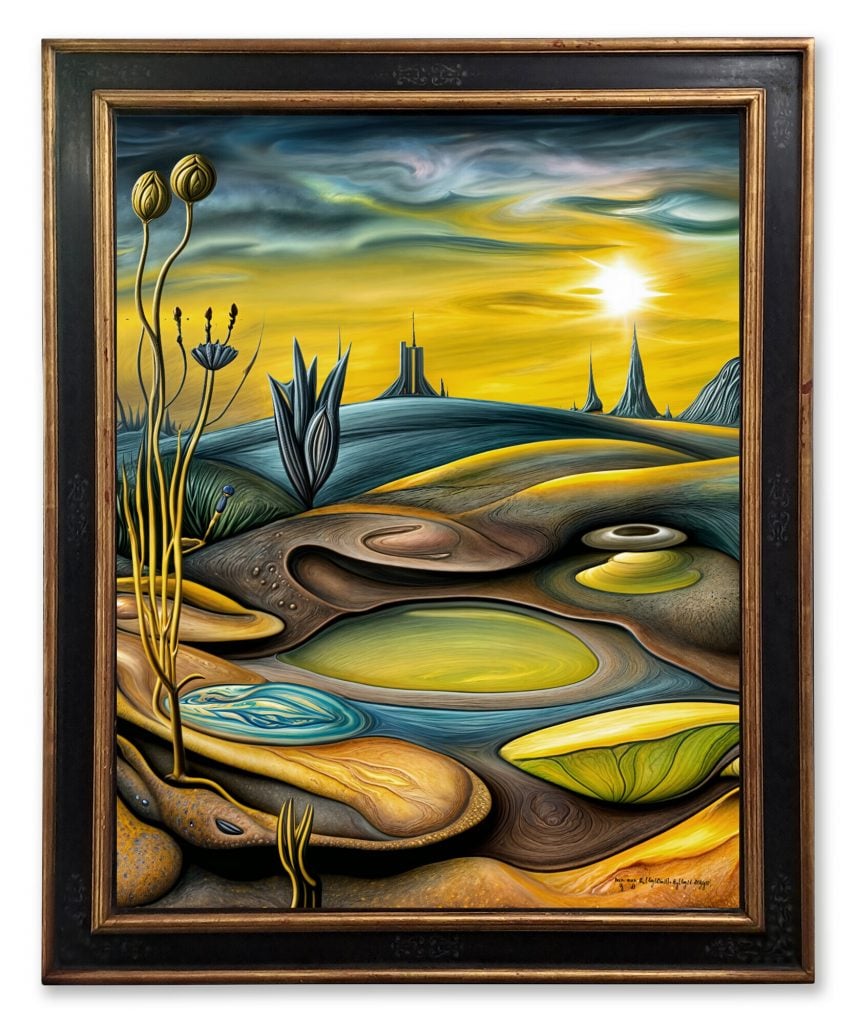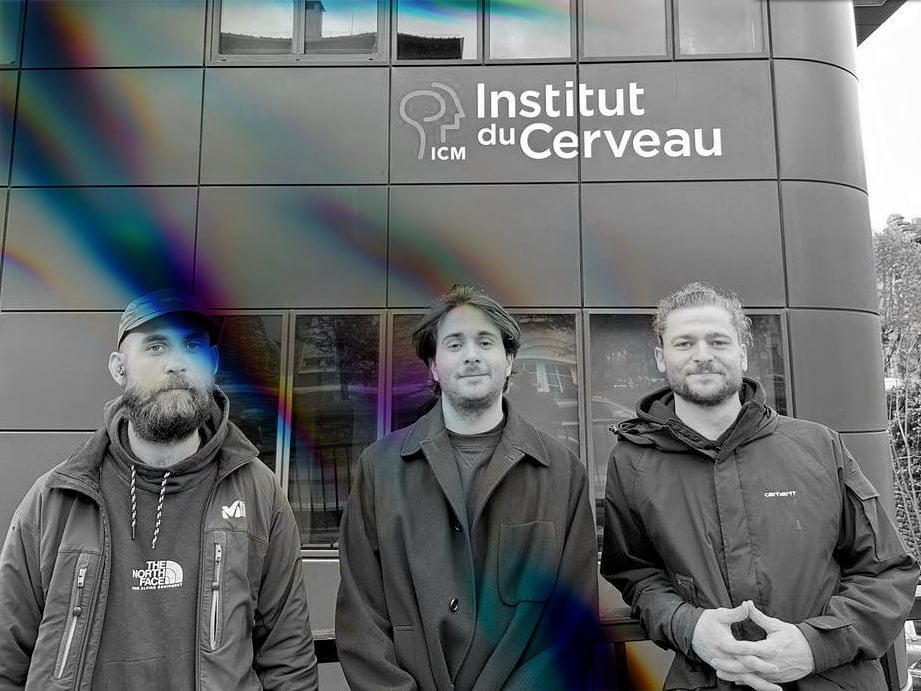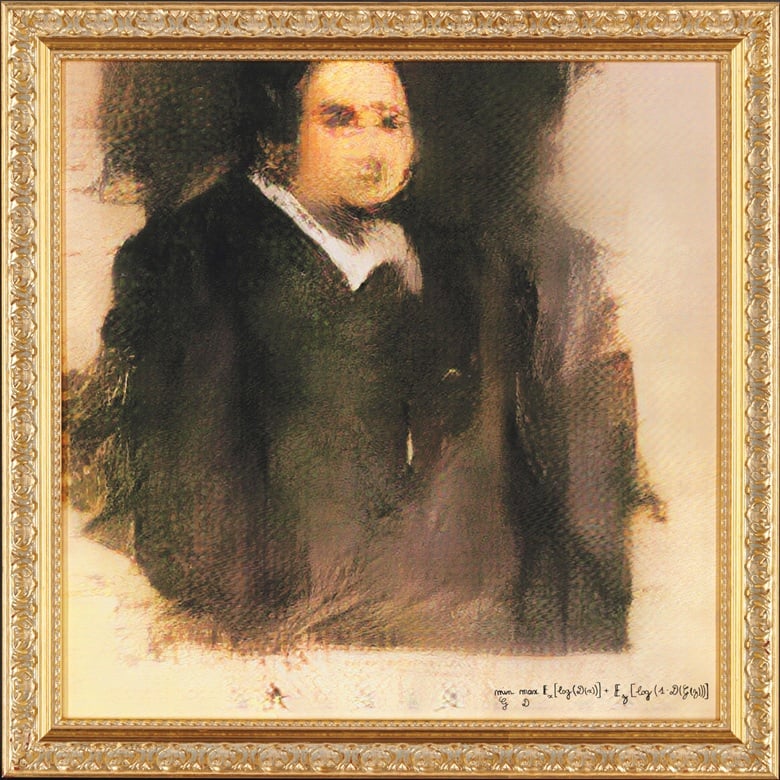Auctions
Obvious’s Surreal Mind-to-Image A.I. Artwork Is Now Up for Auction
The sale follows the French collective's high-profile debut at Christie's in 2018.

Six years after it made a splash at Christie’s by selling the first A.I.-generated artwork at auction, French collective Obvious is returning to the auction house with its latest tech breakthrough. Currently up for bidding is Stagnant Elixir’s Sweet (2024), the group’s latest printed work that was generated with a combination of A.I. and MRI.
The artwork emerges from Obvious’s new series, “IMAGINE,” its mind-to-image project that explores how artificial intelligence can visually construct what’s in our mind’s eye. At its new research laboratory, the collective coupled functional Magnetic Resonance Imaging scans with machine learning to successfully develop ways to recreate what its subjects see and generate visuals based on their imagination. Their results were published in a study in April.
“To us, this new way of creation allows for a next step in Surrealism, with the creation of images directly from one’s mind,” the group told me in May. “This project paves a way for artists to ultimately picture directly what they have in their mind, and to share it with art enthusiasts.”

Obvious. Photo: Obvious.
Stagnant Elixir’s Sweet was created directly from the minds of Obvious’s members. In style, it does bear the hallmarks of a form of Surrealism—which the group dubs “Neo-Surrealism,” defined as “transcending the boundaries of our consciousness.” The image is foregrounded by an earth-toned terrain consisting of veined shapes and foreign flora; on its horizon are pointed monuments underneath a yellow sky swirling with luminescent clouds. The effect is less terrestrial than extra-terrestrial.
The piece, the collective said in a statement, “is the incarnation of our vision… In addition to paving the way for Surrealism to thrive, this work [brings to life] the new Renaissance we are currently experiencing, and the endless possibilities brought by science and technology.”
Obvious’s auction record remains the price achieved by Edmond de Belamy, from La Famille de Belamy (2018), the first-ever A.I.-generated portrait to hit the block. It realized $432,500 against a high estimate of $10,000—an increase of some 4,320 percent.

Obvious, Portrait of Edmond de Belamy, from La Famille de Belamy (2018). Courtesy of Christie’s Images Ltd.
In the time since, A.I. has grown in accessibility and popularity as an artist’s tool. Text-to-image generators have proliferated, flooding the zone with a sea of visuals both experimental and increasingly realistic. To Nicole Sales Giles, Christie’s vice president and director of digital art sales, there remains a market for work generated with A.I., which has shifted not just art-making, but “how collectors collect.”
“The 2018 sale of Obvious’s work was almost prophetic, in a way, showing the art market what is possible in this new space,” she told me over email. “With Stagnant Elixir’s Sweet, Obvious is again breaking new scientific and artistic ground. Today, collectors are increasingly interested in the artist’s process and specifically look for smart technological processes when building their collections.”
Online bidding is now open for Stagnant Elixir’s Sweet, which is tagged with an estimate of $7,000–10,000. The auction’s close coincides with Christie’s Art+Tech Summit (July 17–18) at Rockefeller Center in New York, where the work will be on view.





